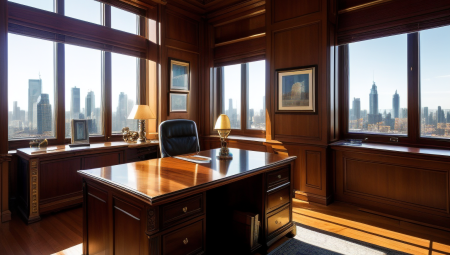Lights, camera, action! The world of film production is a thrilling and complex industry that brings together a multitude of creative and technical talents. From the moment an idea is conceived to the final product reaching audiences around the globe, the journey of a film is nothing short of magical. In this blog post, we will take a deep dive into the fascinating world of film production, exploring the various stages and roles that bring a filmmaker’s vision to life. From the crucial planning and casting stages to the intricacies of cinematography and sound design, we will uncover the artistry and expertise that goes into creating a blockbuster hit. Join us as we explore the role of film producers, the meticulous planning of pre-production, the magic of filming, and the intricate post-production process, all leading up to the exciting premieres and awards ceremonies that mark the completion of a film. Whether you’re a film buff, aspiring filmmaker, or simply curious about the behind-the-scenes magic of movie-making, this blog post promises to take you on an exhilarating journey into the dazzling world of film production.
Table of Contents
The Role of Film Producers
Film producers play a crucial role in the filmmaking process, overseeing the production of a film from its initial conception to its final release. They are responsible for securing financing, hiring key personnel, and managing the overall production process. This often involves working closely with directors, writers, and other members of the production team to ensure that the vision for the film is realized.
Producers also have a hand in shaping the creative direction of a film, providing input on script development, casting decisions, and the overall aesthetic of the project. Their ability to balance the creative and financial aspects of filmmaking is essential to the success of a project.
Additionally, film producers are responsible for navigating the complex world of film financing and distribution. They must be adept at securing funding for a project, whether through studio backing, independent investors, or other means. Once a film is completed, producers also play a key role in marketing and distributing the film to audiences, ensuring that it reaches its intended viewers.
In essence, film producers are the driving force behind a film, overseeing every aspect of its creation and ensuring that it reaches its audience. Their ability to manage the creative, financial, and logistical aspects of filmmaking is what ultimately brings a project to life.
Pre-production: Planning for Success
Pre-production is a crucial phase in the filmmaking process as it sets the stage for the entire project. It is during this stage that planning and organization are essential to ensure the success of the film. From script development to budgeting and casting, every aspect of the film must be carefully thought out and meticulously planned for a smooth production process.
One of the key elements in pre-production is the script development. The screenplay serves as the blueprint for the entire film, laying out the storyline, dialogue, and character arcs. This stage involves drafting and refining the script to ensure that it is engaging and compelling for the audience.
Another crucial aspect of pre-production is budgeting. Financial planning is essential to ensure that the film stays within budget and that all expenses are accounted for. This involves allocating funds for various departments such as casting, location scouting, and production design.
Furthermore, casting is a critical part of pre-production. Finding the right actors to bring the characters to life is essential for the success of the film. This involves auditions, screen tests, and casting sessions to ensure that the best talent is chosen for each role.
Casting: Finding the Perfect Actors
When it comes to creating a successful film, finding the perfect actors is crucial. The casting process is a pivotal step in bringing a script to life, as the actors chosen can make or break a film. It’s essential to carefully consider the roles and the type of actors that will bring the characters to life in the most compelling and authentic way.
One of the key aspects of casting is understanding the specific qualities and attributes required for each character. This involves looking beyond just the physical appearance of the actors and delving into their acting abilities, range, and nuances. A great casting director understands the depth of the characters and seeks actors who can embody their essence.
Furthermore, the casting process involves conducting auditions and screen tests to assess the actors’ suitability for the roles. This gives filmmakers the opportunity to see firsthand how the actors interpret the characters and bring them to life. It’s a meticulous process that demands attention to detail and a keen eye for talent.
Ultimately, finding the perfect actors is essential in creating a film that captivates and resonates with audiences. The right actors can elevate a script and provide a level of authenticity that truly brings a story to life.
Lights, Camera, Action: Filming Begins
Once the pre-production phase is complete, the exciting process of filming can begin. This is the phase where all the meticulous planning and preparation come to life on set. It’s a time when the director, cinematographer, and crew work together to capture the vision of the film.
During filming, the atmosphere on set is electric, as everyone works tirelessly to ensure that each scene is captured with precision and creativity. The director of photography carefully sets up each shot, making sure that the lighting and camera angles are just right to convey the intended mood and emotion of the scene.
As the camera rolls and the actors perform their roles, the art director and set decorators pay close attention to every detail, ensuring that the set design and props complement the overall aesthetic of the film. The sound engineers are also hard at work, capturing every bit of dialogue and ambient sound to create a rich audio experience for the audience.
Every day of filming is a step closer to bringing the story to life on the big screen. Despite the long hours and challenges that may arise, the collaborative effort of the entire team ensures that the filming process is an exhilarating and rewarding experience.
The Art of Cinematography
Cinematography is the art of capturing images and creating visual storytelling through the use of a camera. It involves making important decisions about camera angles, lighting, composition, and movement to convey the emotions and atmosphere of a scene. Good cinematography is essential for creating a visually stunning and immersive film experience.
One important aspect of cinematography is lighting. The use of light and shadow can greatly affect the mood and tone of a scene. Different lighting techniques can be used to create a sense of drama, mystery, or intimacy. A skilled cinematographer knows how to manipulate light to produce the desired effect.
Another key consideration is composition. The way the elements within the frame are arranged can significantly impact the visual impact of a shot. A skilled cinematographer has a keen eye for framing and knows how to create visually compelling images that draw the audience into the story.
Camera movement is also an important aspect of cinematography. The way the camera moves can add dynamic energy to a scene or create a sense of intimacy. Whether it’s a sweeping crane shot or a handheld camera following the action, the movement of the camera can greatly enhance the storytelling.
Sound Design: Creating Immersive Audio
The sound design of a film is a crucial element in creating an immersive experience for the audience. It involves the creation and manipulation of sound elements to enhance the storytelling and emotional impact of the film. Sound designers work closely with the director and other members of the film production team to create a unique sonic environment for the film.
Sound design begins during the pre-production phase, where the sound designer collaborates with the director to understand the vision for the film and how sound can be used to enhance the storytelling. This involves creating a sound design plan that outlines the type of sounds needed, the location of recording, and the use of certain sound effects or music.
During the production phase, the sound designer works closely with the production crew to ensure that the sound elements are captured correctly. This may involve recording dialogue, ambient sounds, and other audio elements on location, as well as using specialized equipment to capture certain sounds.
Post-production is where the magic of sound design truly comes alive. The sound designer works closely with the editor and other post-production team members to layer in sound effects, dialogue, and music to create a rich and immersive sonic experience. This involves using specialized software and equipment to mix and master the final sound design for the film.
The Importance of Production Design
Production design is a crucial element in the filmmaking process, as it sets the visual tone and atmosphere for the entire movie. Every aspect of production design, from the set design to the props and costumes, contributes to creating a believable and immersive world for the audience. A strong production design can elevate the storytelling and help convey the emotions and themes of the film.
One of the key roles of production design is to establish the time and place of the story. Whether it’s a historical period piece or a futuristic sci-fi film, the production design helps transport the audience to the world of the film. This attention to detail and authenticity adds richness and depth to the storytelling, making the narrative more compelling and engaging.
In addition to setting the stage for the story, production design also plays a crucial role in defining the characters. The costumes and props chosen for each character can provide valuable insights into their personalities, backgrounds, and motivations. This careful consideration of every visual element helps the audience connect with the characters on a deeper level and enhances their overall viewing experience.
Furthermore, production design has a significant impact on the overall aesthetic and visual style of the film. Whether it’s through the use of color palettes, architectural designs, or overall composition, production design influences the look and feel of every scene. This creative collaboration between the director, production designer, and other key members of the filmmaking team can result in truly breathtaking and memorable visuals that leave a lasting impression on the audience.
Post-production: Editing and Special Effects
Post-production is a crucial stage in the creation of any film. It is during this phase that the raw footage is edited and special effects are added to bring the filmmaker’s vision to life. The editing process involves carefully selecting the best shots, arranging them in a coherent sequence, and trimming unnecessary footage to create a seamless story. Skilled editors use cutting-edge software to execute this task, ensuring that the final product meets the highest standards of quality.
Special effects play a significant role in enhancing the visual appeal of a film. From creating realistic explosions to building fantastical worlds, special effects artists use their creativity and technical expertise to make the impossible seem real. Whether it’s through practical effects or computer-generated imagery, these professionals are instrumental in immersing the audience in the on-screen universe.
Furthermore, the post-production stage also involves color correction, sound mixing, and music composition, all of which contribute to the overall impact of the film. It is the meticulous attention to detail in post-production that elevates a movie from good to great, ensuring that every aspect of the final product is polished to perfection.
In essence, the work done during post-production is essential in refining the raw footage into a captivating and cohesive cinematic experience. Without the expertise of editors and special effects artists, many beloved films would not have achieved their iconic status in the world of cinema.
Marketing and Distribution: Reaching the Audience
Marketing and distribution are crucial aspects of the filmmaking process. It is not enough to simply create a great film; it is also important to ensure that it reaches the right audience. This involves understanding the target demographic and finding ways to effectively promote the film to them.
One of the key strategies for reaching the audience is through targeted advertising. This involves identifying the platforms and channels that are most commonly used by the target demographic and creating advertising campaigns that will resonate with them. This might include social media advertising, targeted online ads, and partnerships with influencers or other media outlets.
Another important aspect of marketing and distribution is creating a buzz around the film. This can involve generating press coverage, organizing promotional events, and engaging with potential audience members through contests or other interactive experiences. By generating excitement and interest in the film, filmmakers can increase the likelihood that their target audience will seek out the film once it is released.
Finally, the distribution of the film is essential to ensure that it reaches as many people as possible. This might involve securing deals with distributors, organizing screenings at film festivals or other events, and making the film available through a variety of different platforms. By making the film accessible to a wide audience, filmmakers can maximize its impact and reach.
The Red Carpet: Film Premieres and Awards
Attending a film premiere is a dream come true for many actors and filmmakers. It is the moment when their hard work is finally showcased to the world. Stepping onto the red carpet signifies the culmination of months, and sometimes years, of dedication and creativity. The red carpet event is not just about the movie itself, but also about the recognition and acclaim it receives.
There is an air of excitement and anticipation as actors, directors, and other key figures in the film industry make their way into the premiere venue. Photographers line the red carpet, capturing every glamorous moment. For many, the red carpet is a platform to showcase their personal style and make a statement. It has become synonymous with luxury and high fashion, with designers vying to dress the biggest stars for these events.
At the premiere, the film is screened for the first time in front of an audience, which often includes critics and industry professionals. The response from the audience can set the tone for the film’s success in the coming weeks. Positive reviews and audience reactions can generate buzz and propel the movie to box office success and critical acclaim.
For filmmakers, the red carpet is also a moment of recognition and celebration. Winning awards and nominations at prestigious ceremonies like the Oscars, Golden Globes, or Cannes Film Festival can elevate a film’s status and bring attention to the talent and craftsmanship involved in its creation.





